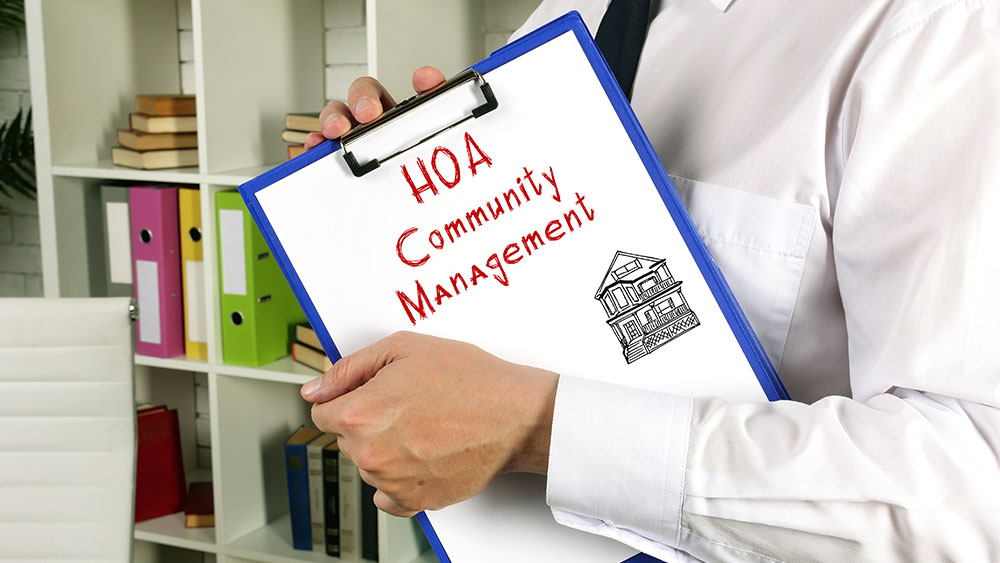
If you’ve searched for homes or other real estate properties, you’ve probably heard about a Homeowner’s Association (HOA) and Property Owner’s Association (POA).
There are almost 360,000 HOAs in the U.S. as of 2021. Although the terms HOA and POA are often used interchangeably, the two organizations have very different functions.
What Is a Homeowner’s Association (HOA)?
Generally, a homeowner’s association is a collection of similar houses or residences in the same geographical area, conforming to the same rules and regulations. Developers usually create an HOA in a new residential or community plan.
The association is responsible for drawing up and enforcing guidelines for the properties under its jurisdiction. It gives structure to the neighborhood and a sense of community to the area. Moreover, its community standards protect your investment as a homeowner.
HOAs are common in housing developments and other areas where residents share amenities or common spaces like the following:
- Gated communities.
- Condominiums.
- Townhome complexes.
- Subdivisions.
- Private/planned neighborhoods.
In the U.S., around 25% of all houses are under such an association, corresponding to about 73 million people.
Condominium buildings also have associations among unit owners. Some condos refer to their associations as a Condo Owner’s Association (COA), although some use the more common HOA. Nevertheless, COA and HOA are essentially the same—different tags but the same functions.
What Are the Functions of HOAs?
Homeowner’s associations are mainly involved with enforcing rules and regulations, managing the community, and providing services such as:
- Amenities: Some communities include a swimming pool, clubhouse, fitness area, and other exclusive amenities for members.
- Maintenance services: Services like trash removal and landscaping that include lawn care in common areas of the community are usually part of the HOA’s functions. While each HOA may be different, repairs of fences, communal streets, and the condo building’s roof (in the case of COAs) are typically within the association’s purview.
- Insurance policies: Some HOAs include insurance to cover any liabilities and repairs for public spaces.
- Enforcement of community rules: By joining an HOA, owners are legally bound to obey its rules, provided those rules align with city ordinances.
Rules that HOAs enforce include the following:
- Regulations of holiday and other lawn decorations.
- Policies on noise control.
- Limits on the number of home or unit occupants.
- Guidelines on parking.
- Restrictions on short-term rentals.
- Standards on property maintenance.
- Regulations on trash and recycling.
- Rules on keeping pets (size, quantity limits, etc.).
- Rules on architectural standards.
Some rules ensure smooth interaction among owners in the building or the community.
Members pay a monthly or annual fee for the HOA to function and enforce its rules. The average HOA fee across the country is $170. Some HOAs may charge up to thousands in monthly fees, but these HOAs are typically from luxury or high-end communities.
There isn’t a standard fee for HOAs, and they can vary depending on these factors:
- Operating expenses.
- Location.
- Type of property.
- Amenities.
- Number of properties.
If you’re in the market for a house or condo unit, it is good to know about the HOA’s bylaws, financial records, covenants, conditions, & restrictions (CC&Rs).
What Is a Property Owner’s Association (POA)?
While HOAs’ functions can include rules like how many pets you can have at your house or condo unit, POAs’ functions focus more on matters affecting the whole community, like parks, businesses, clubs, events, and others.
POA members can be owners of various types of properties:
- Condos.
- Single-family homes.
- Townhouses.
- Duplexes.
- Commercial properties.
- Other residential properties.
A POA’s areas of concern include businesses and residential properties and aren’t limited to homes. Neighborhoods, whole towns, or even a few towns, can fall under a POA’s jurisdiction. However, some POAs may focus only on a particular area, like a valley, a watershed, a waterfront, or a historical place. Some may cover an immense golf course too.
A POA can have a more extensive area of responsibility, and some HOAs may be part of its authority.
What Are the Functions of a POA?
POAs, unlike HOAs, aren’t just focused on maintaining the values of properties. They also implement the following within their jurisdiction:
- Long-term development projects.
- Zoning restrictions.
- Improvement and maintenance of the aesthetic appeal of community areas.
A POA’s goal is to encourage the long-term development of a more extensive area. It represents not just the homeowners but developers as well. Members don’t have to own a property in the community, unlike an HOA or COA.
An HOA and POA’s goals may sometimes overlap, but a POA’s primary goal is to encourage the growth of businesses and industries in the area. Consequently, they may offer networking events, community education, and legal assistance to members and owners. And similar to an HOA, members of a POA pay membership dues.
Conclusion
HOAs and POAs are sometimes used interchangeably, but they perform different functions. For example, an HOA focuses more on aesthetics and protecting members’ properties from depreciation. In addition, it establishes bylaws and makes sure members follow them.
A POA, on the other hand, encompasses a larger area and is not limited to residential properties. While it has some functions that overlap with an HOA, it focuses more on long-term development, encouraging the development of businesses and industries in its jurisdiction, improving community areas, and implementing zoning restrictions.
© 2023 xpertRealtyMarketing. Sign up to have real estate articles delivered to your website.
